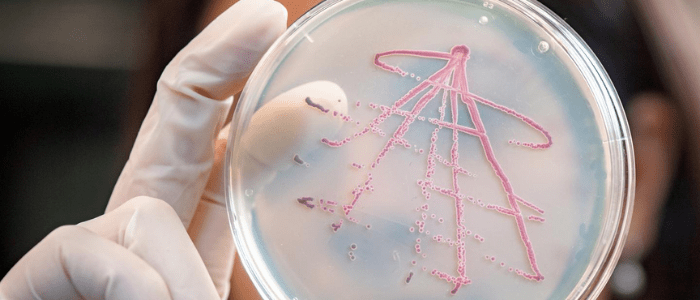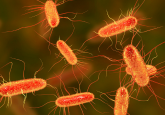Live fast, die young: bacterial fitness affected by growth rate

New research demonstrates that rapid growth can result in reduced bacterial fitness when food sources are scarce.
Researchers from the Technical University of Munich (Germany) have shed light on the survival strategies of Escherichia coli. When the bacteria are exposed to a good food source they multiply rapidly, but when deprived it is the fastest growing bacteria that die first. The findings could have implications for improved antibiotic efficacy.
E. coli are a popular model organism and can be found in large numbers in the digestive tracts of humans and animals. The vast majority are harmless; however, some strains can cause illness. Understanding the growth patterns and bacterial fitness of E. coli can help facilitate research and treatment strategies.
The team systematically analyzed the growth rate of E. coli after providing different cultures with nutrient solutions of differing compositions. Following this, the cultures were then put on a starvation diet and the cell multiplication rate and survival were examined.
![]() Bacterial protein puts the breaks on CRISPR–Cas13 editing
Bacterial protein puts the breaks on CRISPR–Cas13 editing
Scientists have discovered that a single protein derived from Listeria seeligeri – a type of bacteria commonly found in soil – could aid in greater specificity in the CRISPR–Cas13 editing process.
Regardless of how nutrient-rich their diet was previously, when deprived of food the bacteria entered a maintenance phase where growth was halted. In this phase, all available energy sources – including the remains of dead bacteria – are utilized in an attempt to sustain metabolism.
Many cells died within a few days of this starvation period. The death rate was observed to be higher in bacteria that had previously exhibited rapid growth. It is hypothesized that they are in a state of increased energy consumption so therefore waste resources.
“We now understand why evolution doesn’t favor the fastest possible reproduction,” explained the study’s lead Ulrich Gerland. “The biological fitness that is crucial for the survival of a species builds on a balance between growth and survivability.”
It is hoped the research could have clinical applications in the future. Using a “carrot and stick” approach, a sweet dish could be consumed prior to the administration of an antibiotic for an intestinal infection, theoretically weakening the bacteria and making them more susceptible to the antibiotic. However, the authors caution that more research is required before pursuing this technique.





